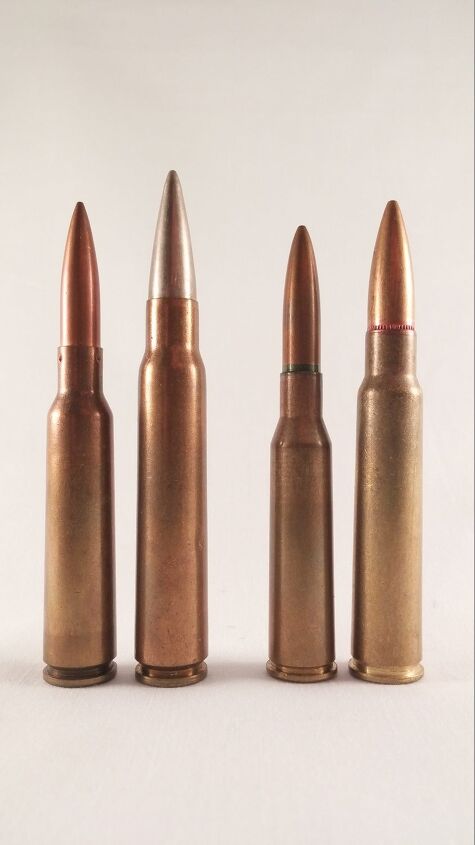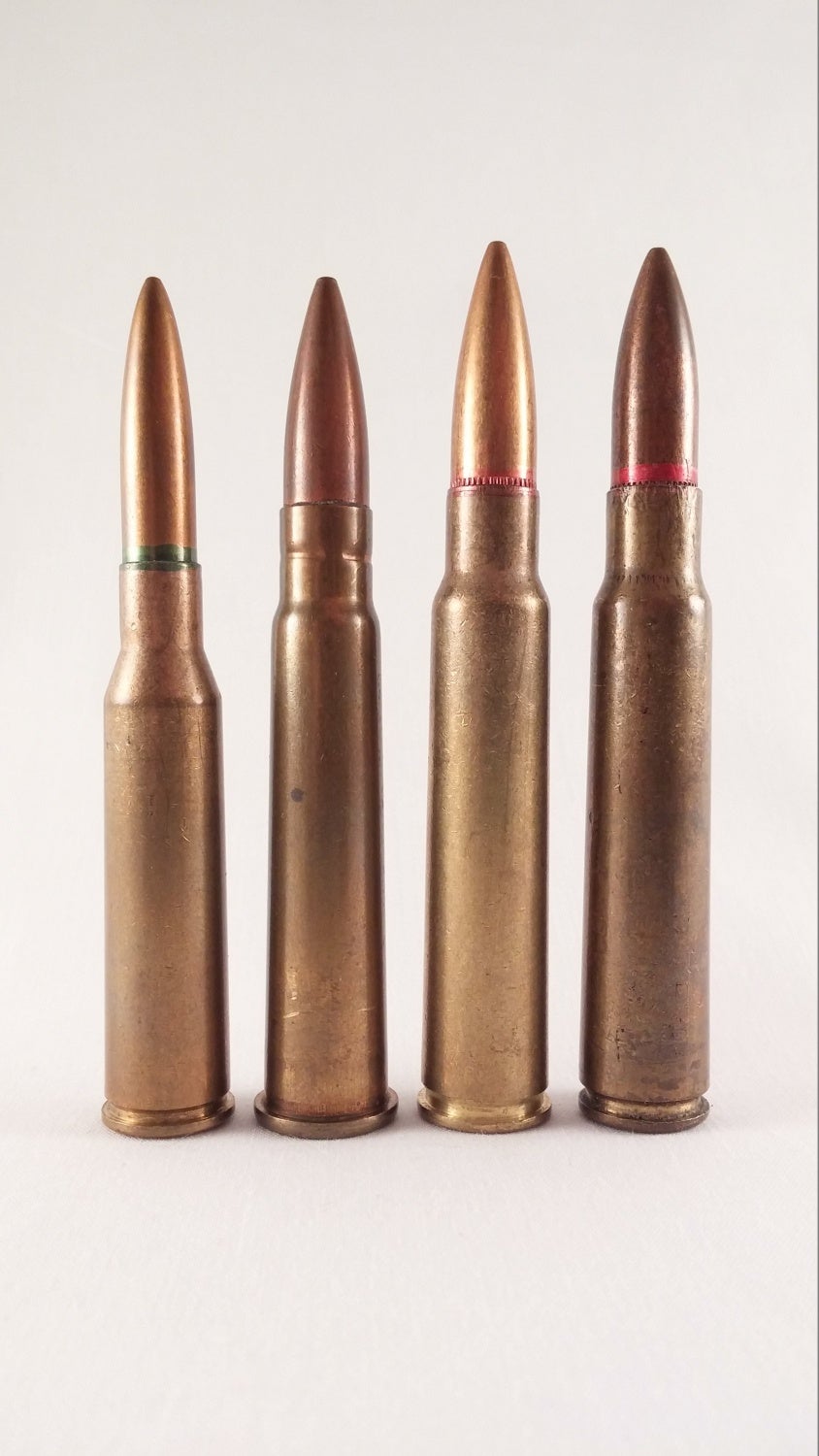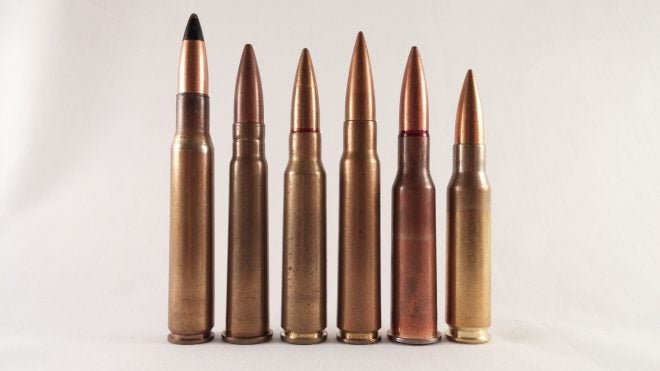A trend towards ever more powerful and longer-ranged ammunition was cut short by the realities of the First World War: Technologies not previously invented or accounted for, such as the man-reaping machine gun and the portable infantry mortar, made the existing infantry tactics of long-range volley fire not just obsolete, but quaint. Further, new essential small arms projectile designs like tracers, armor piercing bullets, and exploding observation rounds demanded more space in the projectile envelope, putting the previously cutting-edge small-caliber 6.5mm rounds at a disadvantage. The advantages of these small-caliber rounds were virtually negated, too, by the advent in 1905 of the German S-Patrone, a flat-based, pointed projectile that was vastly more efficient in supersonic flight than previous round-nosed designs. Although French engineers preceded this design with the superior (and top secret) Balle D round, it was the German bullet that became the pattern for military rifle projectiles worldwide.
These S-type “spitzer” bullets gave ~.30 caliber ammunition the lower recoil and reduced weight characteristics of competing 6.5mm rounds firing more primitive round-nosed bullets, while offering even flatter trajectories and superior terminal ballistics afforded by their much higher muzzle velocities. In 1902, the 2,300 ft/s muzzle velocity of the 7×57 Mauser was at the upper end of the velocity scale; by 1905 with the S-Patrone, “high velocity” meant 2,900 ft/s or more.
These factors combined to cement the (approximately) .30 caliber as the de-facto infantry small arm caliber of the first half of the 20th Century. The last 6.5mm infantry round was adopted in 1904, that being the Portugese 6.5×58 Vergueiro; it wouldn’t be until 1954 that another round smaller than 0.298″ was adopted with the 7x49mm Liviano caliber of Venezuela. For fifty years, the .30-.32 caliber was the rule of the day, whether that was the American .30-06 caliber, the British .303 caliber, the Russian 7.62x54R caliber, the German 7.9mm caliber, or the French 7.5×54 caliber.

Left to right: 6.5×55 Swedish Sk.Ptr. m/41, 8×63 Bofors Ptr. m/32; 6.5x50SR Type 38, 7.7x58SR Type 92.
Even nations that had previously adopted smaller caliber rounds found it necessary to adopt larger-caliber rounds. The Japanese, who had used their 6.5x50SR round since 1897, began after World War I a program to adopt a new larger-caliber 7.7mm round for both rifles and machine guns. Their somewhat disconcerted programs would result in no less than four distinct calibers being fielded by the onset of World War II. The Swedes were another; their excellent 6.5x55mm caliber proved to not be enough for machine gun use, and so they adopted the monstrous 8x63mm Bofors caliber for their Browning-based machine guns, and for the Mauser rifle-armed crews for those weapons. The French, as previously mentioned, after the First World War forwent their 7mm Meunier high-velocity caliber in favor of a conventional .30 caliber 7.5mm cartridge.

Japanese ammunition by 1940: 6.5x50SR Type 38, 7.7x56R Type 87 (represented by .303 British Mk. VII), 7.7x58SR Type 92, 7.7×58 rimless Type 99.
For fifty years the .30 caliber round reigned, and – although supplemented in the 1960s by newer, lighter ~.22 caliber rifle cartridges – it continues to serve today as part of the current dual-caliber paradigm.
 Your Privacy Choices
Your Privacy Choices
